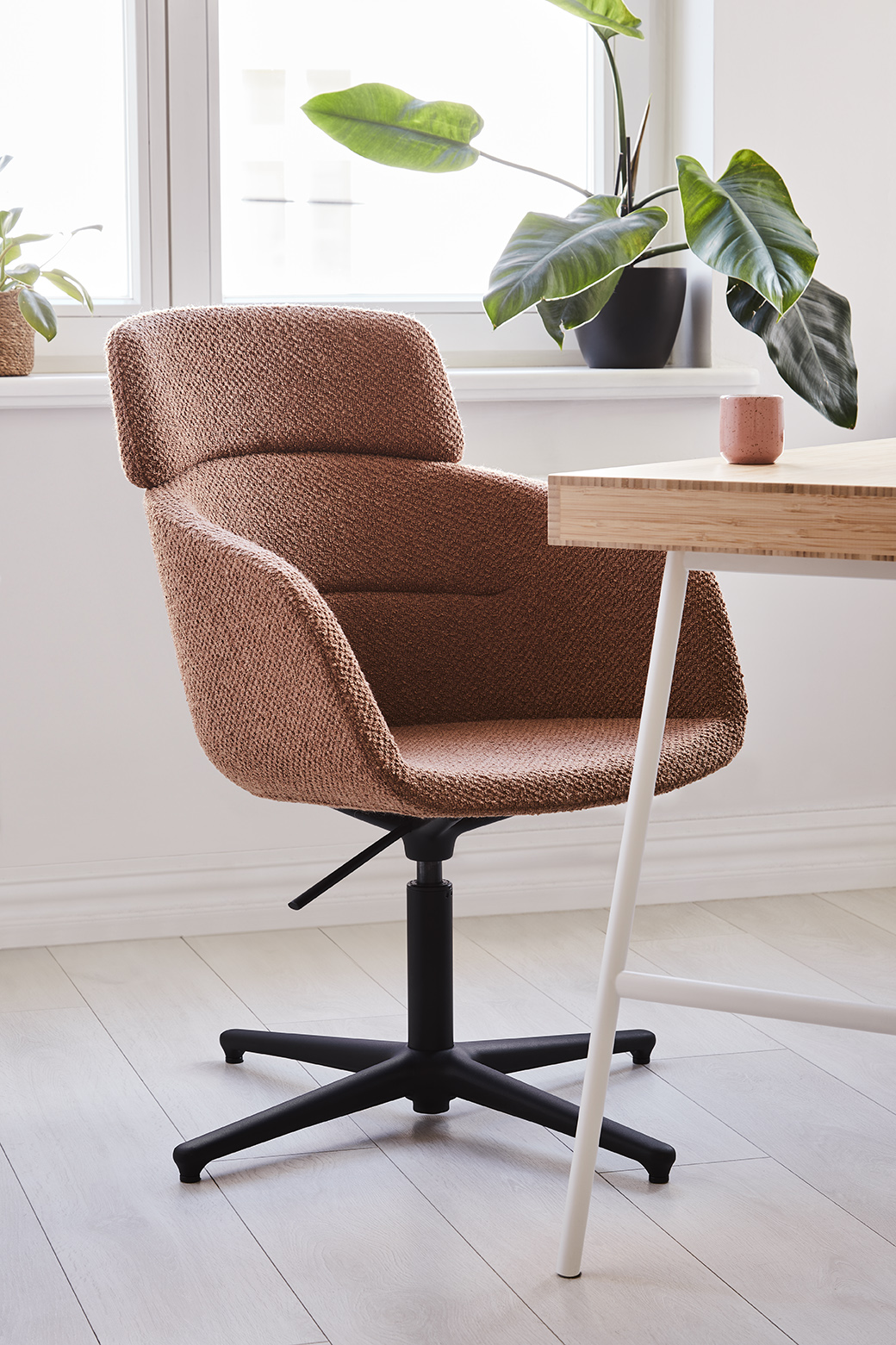Aosta is our new proposal suited to those who seek upholstery fabrics with a bold 3-D structure. It combines an interesting appearance that is in line with the current trends with an extensive colour palette, offering an alternative to typical bouclé fabrics. It is made of 47% polypropylene obtained in the process of recycling textile waste.
Aosta is certainly consistent with the now popular trend of haptic fabrics: tangible, soft and cosy. Its weave forms a fine checkerboard pattern, but a bouclé thread used to produce Aosta blurs this dimensional motif. The lavish structure of the fabric perfectly conceals small snags resulting from every day use (e.g. caused by pets).
The fabric is available in either a monochromatic or a dichromatic variant (due to the use of two colours of the yarn). The 3-D structure yields a chiaroscuro effect and emphasises the fabric’s gentle sheen. Aosta will be a great solution for both geometric, regular furniture elements as well as fashionable armchairs and sofas with oval, rounded forms.
Among its 25 colour variants, you will find both practical greys, beiges and browns as well as trendy shades of broken white, écru, mustard yellow and russet.
Aosta has been made of 47% polypropylene recovered from the recycling of textile waste. Polypropylene fabrics can be recycled and, unlike polyester, re-used in fabric production. Polypropylene fibres retain their properties during recycling and thus can return to the weaving mill for further use. As for polyester, currently there is no technology that would allow for re-using textile waste in the production of new fabrics.
Polypropylene recovered from the recycling of textile waste does not require water in the production process and does not contain lead-based pigments. Its carbon footprint is 40%, 50% and 70% lower than that of virgin polypropylene, polyester and acrylic yarns, respectively. Furthermore, polypropylene production requires 78-85% less crude oil as compared to virgin polypropylene, polyester and acrylic yarns.










